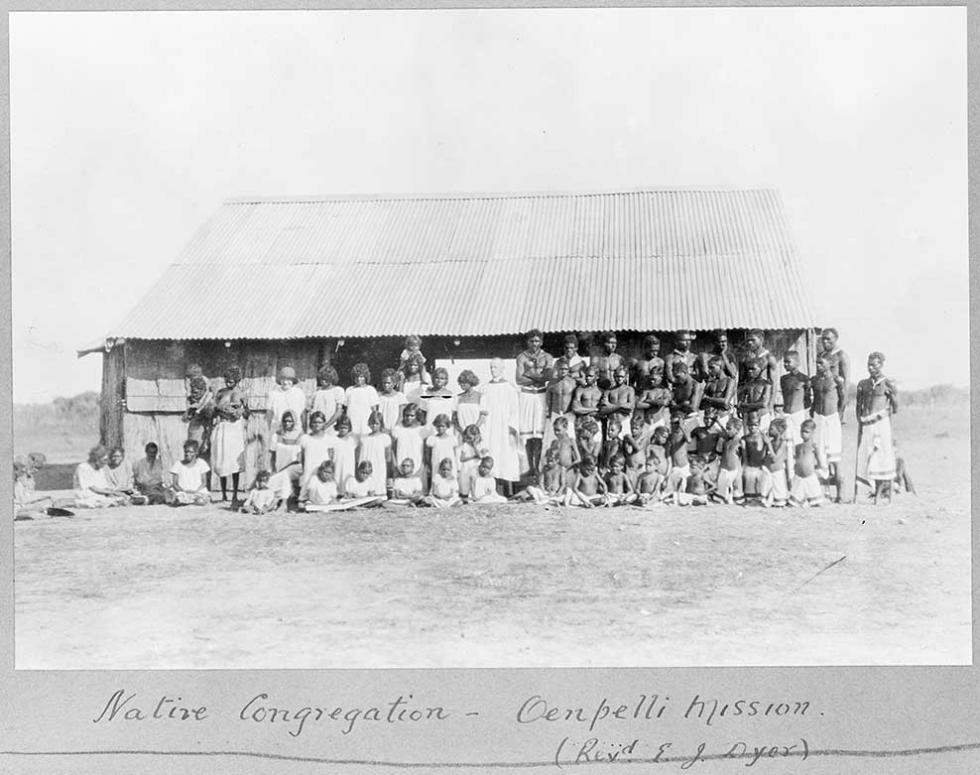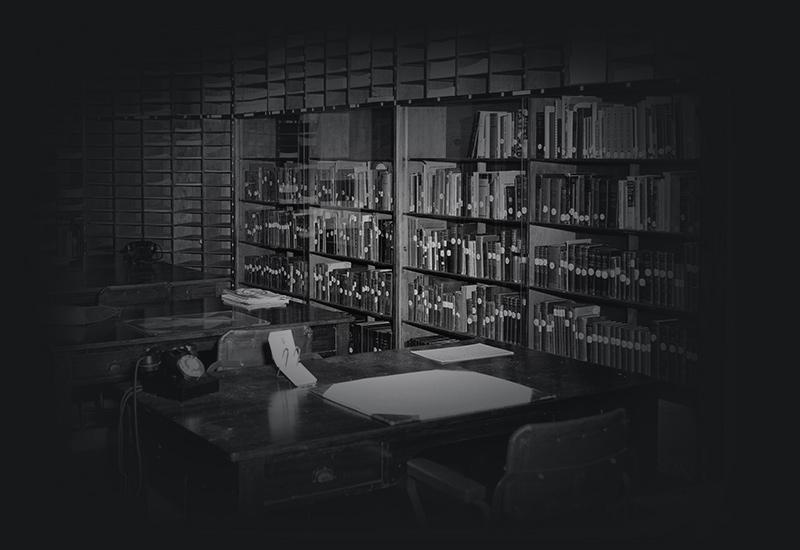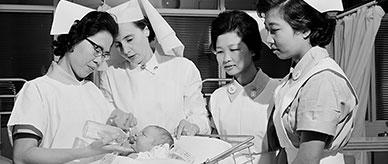


About this record
This black-and-white photograph, from John William Bleakley’s government report The Aboriginals and Half-castes of Central Australia and North Australia (1929), was taken at Oenpelli Mission in the Northern Territory, an institution run by the Church of England’s Church Missionary Society. First Australian men, women and children are posing outside a building. The photo also shows the Reverend Alfred Dyer, dressed in a clergyman's white surplice, and his wife, Mary ‘Katie’ Dyer.
This photograph comes from a report by John William Bleakley, Chief Protector of Aboriginals in Queensland. In 1928, Prime Minister Stanley Bruce had asked Bleakley to investigate the conditions of the estimated 21,000 Indigenous people in central and northern Australia living inside and outside institutions. Bleakley was appalled by the extent of disease, malnourishment, unsanitary housing and abuse. Large numbers of children went unschooled, while adults—many of them unskilled—were not paid for their work.
Bleakley observed that Christian missions were motivated by a desire to convert First Australians and to promote European values—but generally showed more concern for their welfare than did the government homes. He recommended that the Northern Territory’s seven missions be given sole responsibility for First Australians’ welfare and education, under the supervision of a government administrator, with increased funding for medical care, education and vocational training. Bleakley’s recommendations helped pave the way for the creation of the Arnhem Land Reserve. When the federal government implemented land rights and self-determination policies in the 1970s, the lands of former missions such as Oenpelli (now Gunbalanya) were given back to the Traditional Owners.
Acknowledgments
Learning resource text © Education Services Australia Limited and the National Archives of Australia 2010.
Related themes
Need help with your research?
Learn how to interpret primary sources, use our collection and more.



